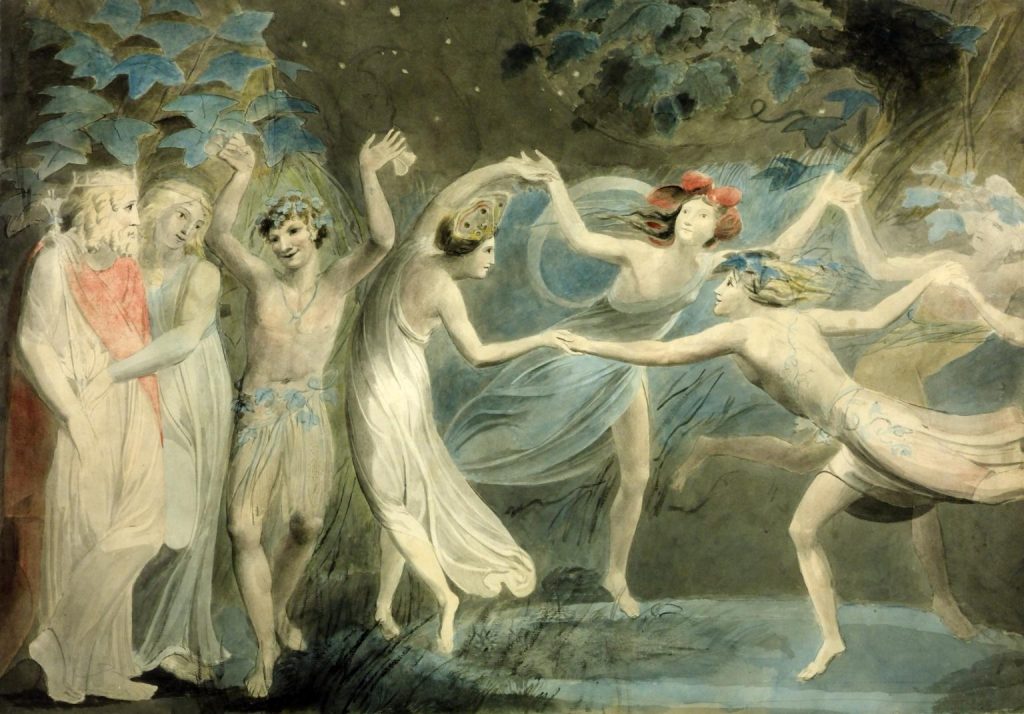Moth: Shakespeare’s Most Mysterious Fairy October 21, 2017
Author: Beach Combing | in : Modern , trackbackAn important fairy institution are bad productions of A Midsummer Night’s Dream in which a little girl with brown butterfly wings runs on stage being announced as Moth, one of Titania’s maids. Yet bad moth costumes may all be based on a misunderstanding.
The basics. Titania, it will be remembered, has four servants: Peaseblossom, Mustardseed, Cobweb and Moth. Apparently, then, we get two flowers, a secretion and a nocturnal flying insect. They are beautifully captured in Blake’s most famous image from Midsummer Night’s Dream where the four fairies dance: note the wings on top of Moth. But Moth may not be a moth: this would not be Blake’s first misreading of great works of English literature, though at least on this occasion it was not willful. There are three problems with the identification.
First, ‘moth’ was pronounced and interchangeably written ‘mote’ in Shakespearean English and ‘mote’, of course, is a speck of dust (as in the Biblical ‘thou hypocrite, first cast out the beam out of thine own eye; and then shalt thou see clearly to cast out the mote out of thy brother’s eye’). Shakespeare uses the word, not including proper nouns, ten times: two times for the insect, eight times for a speck (based on own concordance search, other figures I’ve read differ slightly but show the same trend).
Second, a ‘mote’ would suit, even better, than a ‘moth’, Shakespeare’s conceit that fairies are very, very small: ‘she comes/ In shape no bigger than an agate-stone/ On the fore-finger of an alderman’. Shakespeare, it is often said, invented the tiny fairy. Note too that the character Moth in Love’s Labour Lost (a page) is never referred to as an insect but is, several times, referred to as being extremely small.
Third, Moth/Mote does not seem to exist. It has been pointed out that Bottom addresses Peasebottom, Mustardseed and Cobweb, but ignores Moth/Mote as if she is simply not there. Perhaps there was some on stage chicanery here where Mote was represented, somehow, as an invisibly small presence, like Tinker Bell’s light in the original 1904 Barrie play?
If you love bad amateur productions of the Dream and you want Moth to be, well, a Moth, there is one reason for hope. In an article published in 1959 Lou Reynolds and Paul Sawyer pointed out that peasebottom, mustardseed, cobwebs and, yes, moths, all had important applications in Elizabethan folk medicine. Motes, though, don’t stop nose bleeds… (Folk Medicine and the Four Fairies of a Midsummer-Night’s Dream’, Shakespeare Quarterly 10).
For or against moths or motes: drbeachcombing At yahoo DOT com



